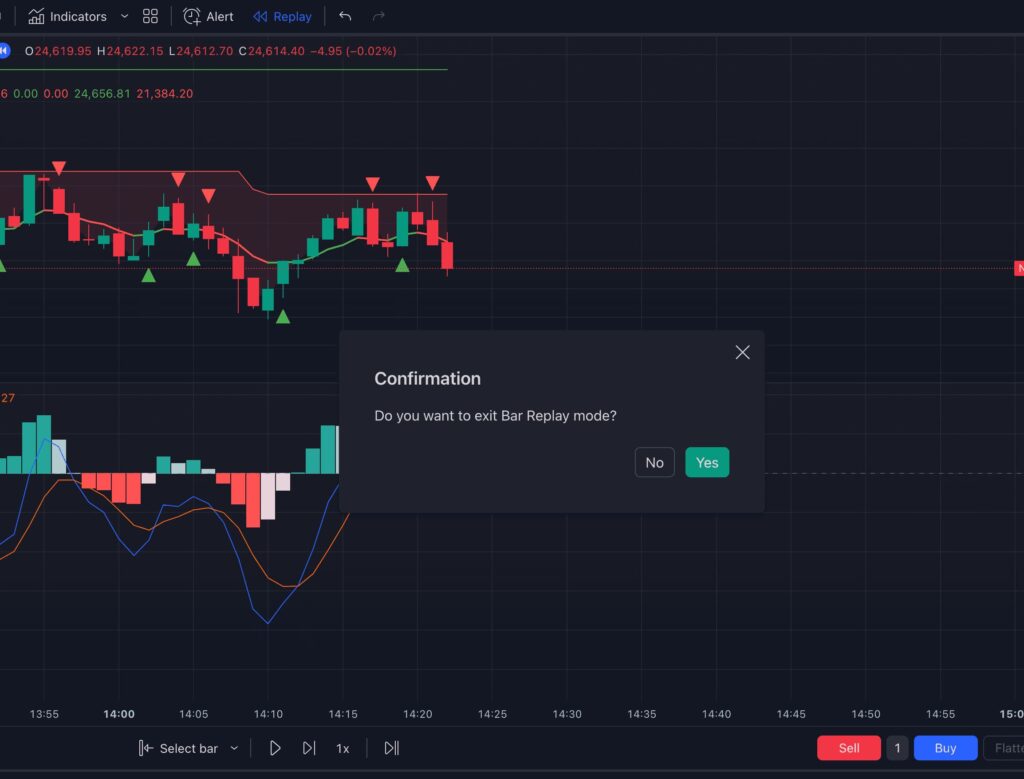Best MACD Setting for Intraday Trading
Intraday trading is a form of trading which requires more quick responses and timely decisions. MACD indicator is one of the most popular intraday trading indicator but the default settings of it are not enough for a fast paced intraday trading environment. In this article, we will explore what the best settings for MACD indicator are to get better signals and maximise your returns.
What is MACD?
MACD stands for Moving Average Convergence Divergence. It takes two moving averages into account to give a buy or a sell signal. It primarily consists of three main components!
- MACD Line: By default MACD shows the difference between 12 day and 26 day EMA. We will be making a few changes today for intraday trading.
- Signal Line: The signal line is a smoothing line which is set to 9 day EMA by default.
- Histogram: The histogram shows the difference between the MACD and the signal line.
Understanding MACD Settings
The default settings for MACD are 12, 26, and 9. These settings are better for long term trading. But for a shorter term such as intraday trading, these are not suitable due to a delay in response.
Optimized MACD Settings for Intraday Trading

-
Here, Fast EMA is set to 8, Slow EMA set to 18, Signal Line set to 5.
The above settings, increase the sensitivity of the MACD indicator for intraday trading to capture short term trends quickly with a lesser delay. Let us understand why these settings give better results!
Fast EMA: 8
Fast EMA being lower than the original 12 Fast EMA, reacts faster to the short term price changes. This makes it a better option for intraday trading. Our backtest results suggest that this has a better accuracy.
Slow EMA: 18
The 26 Slow EMA line does not give a balance. An 18 EMA responds better to intraday trading and is still responsive enough for intraday trading.
Signal Line: 5
A 5 EMA Signal lines gives quicker buy and sell signals. This is essential for day trading.
Implementing the Best MACD Settings
Buy Signal
When the MACD line crosses from below the Signal Line, it indicates a buy Signal.
Sell Signal
When the MACD line crosses from above the Signal Line, it indicates a sell signal.
Visual Example
Let us take an example to compare the difference between the default MACD settings for intraday trading and the ones specified by us!
Example 1: Buy Signal
Default settings

Optimised settings

In the above two charts we can clearly see the difference. The optimised settings gave the buy signal earlier than the default settings thus letting us capture more points. Example 2: Sell Signal
Benefits of Best MACD Settings for Intraday Trading
- Increase in Sensitivity: For intraday trading, a higher sensitivity helps to catch movements over a smaller period of time. The EMA changes allow traders to quickly respond to the market changes.
- Better Timing: Here we will use a shorter signal line to capture more opportunities of buy and sell signal.
- Better Accuracy: The settings of (8, 18, 5) are specially for intraday trading. This enhances the accuracy ensuring that you have more chances of winning. However, we recommend you to backtest the settings for every scenario to make sure the settings are optimal for the current market.
Conclusion
The default settings of MACD have a delay in capturing the movements. With the settings being optimised for Intraday, you can capture the movements faster. This can help you capture more points and get more opportunities. The default settings are best for longer term trading but for a shorter term, 8, 18, 5 is an optimal setting. Always test the settings on paper trading as well as backtest the settings before using it on a live account. Fast EMA 8, slow EMA 18 and signal line 5 have by far been the best MACD settings for intraday trading in general.
For more such strategies, be sure to subscribe to our blog!
FAQs
Why should I use custom MACD settings instead of the Default ones?
The default settings of MACD in TradingView are (12, 26, 9). These are configured for a general market condition with long term trading in mind. These are not the Best MACD settings for intraday trading. The custom MACD settings ensure that the indicator responses more quickly for day trading scenarios.
Can I use these settings for other scenarios such as swing trading?
No, these settings are specifically for intraday trading. While these settings can be tested, we recommend playing with the indicator and backtesting it for the past few weeks to determine what the best settings are for any other scenario.
How do I backtest the new MACD settings?
Try checking the historical data of the instrument you are using these settings on. You can use a platform like TradingView which supports testing strategies for historical data. It supports simulation of historical data which can be used to test your strategy as if you are using it in the live market. Always backtest and analyse the effectiveness before using the strategy in live market.
Feel free to make a comment if you have any questions. Also share it with your friends if you liked our strategy!

Want to automate technical analysis? Checkout our Luxalgo Review!